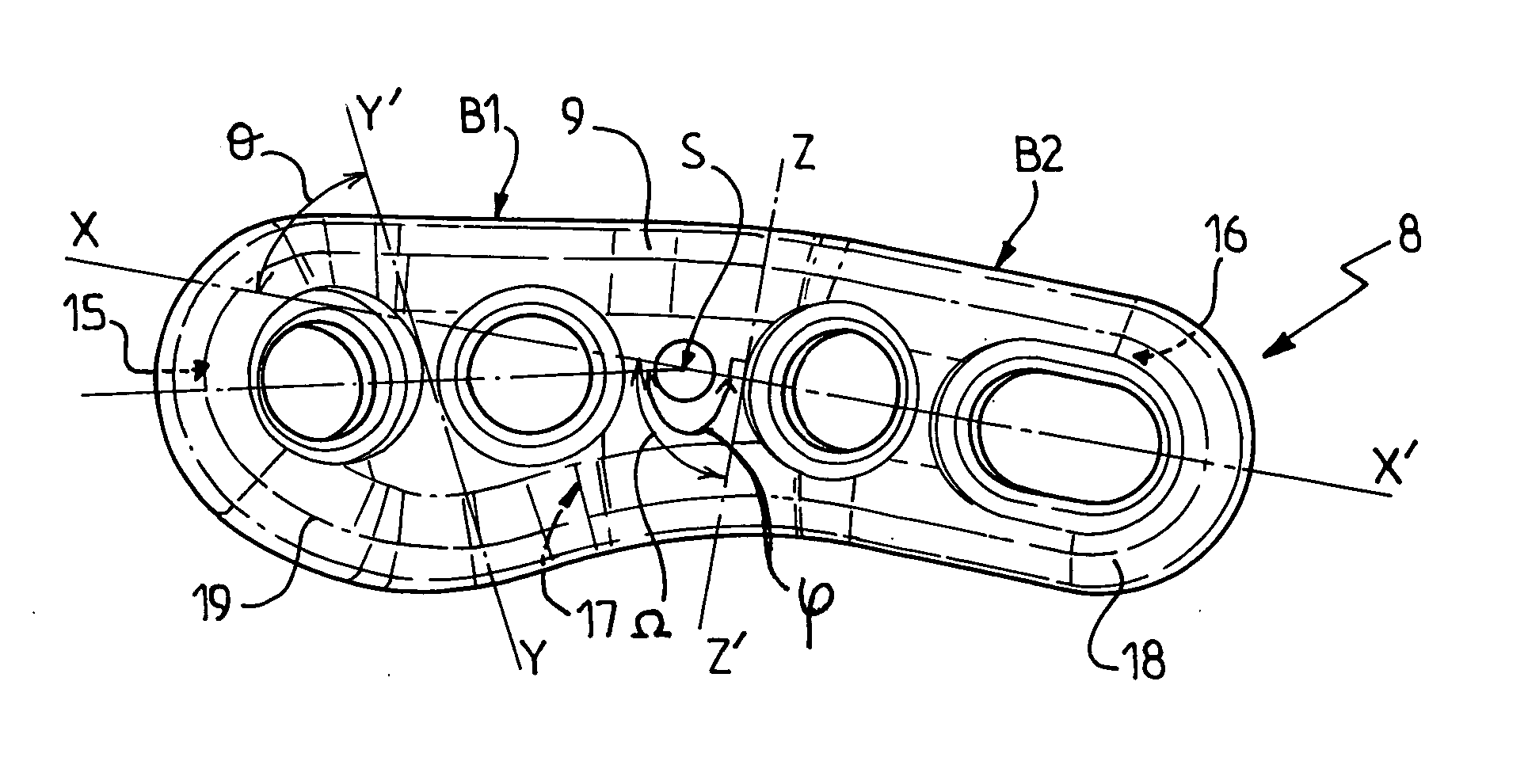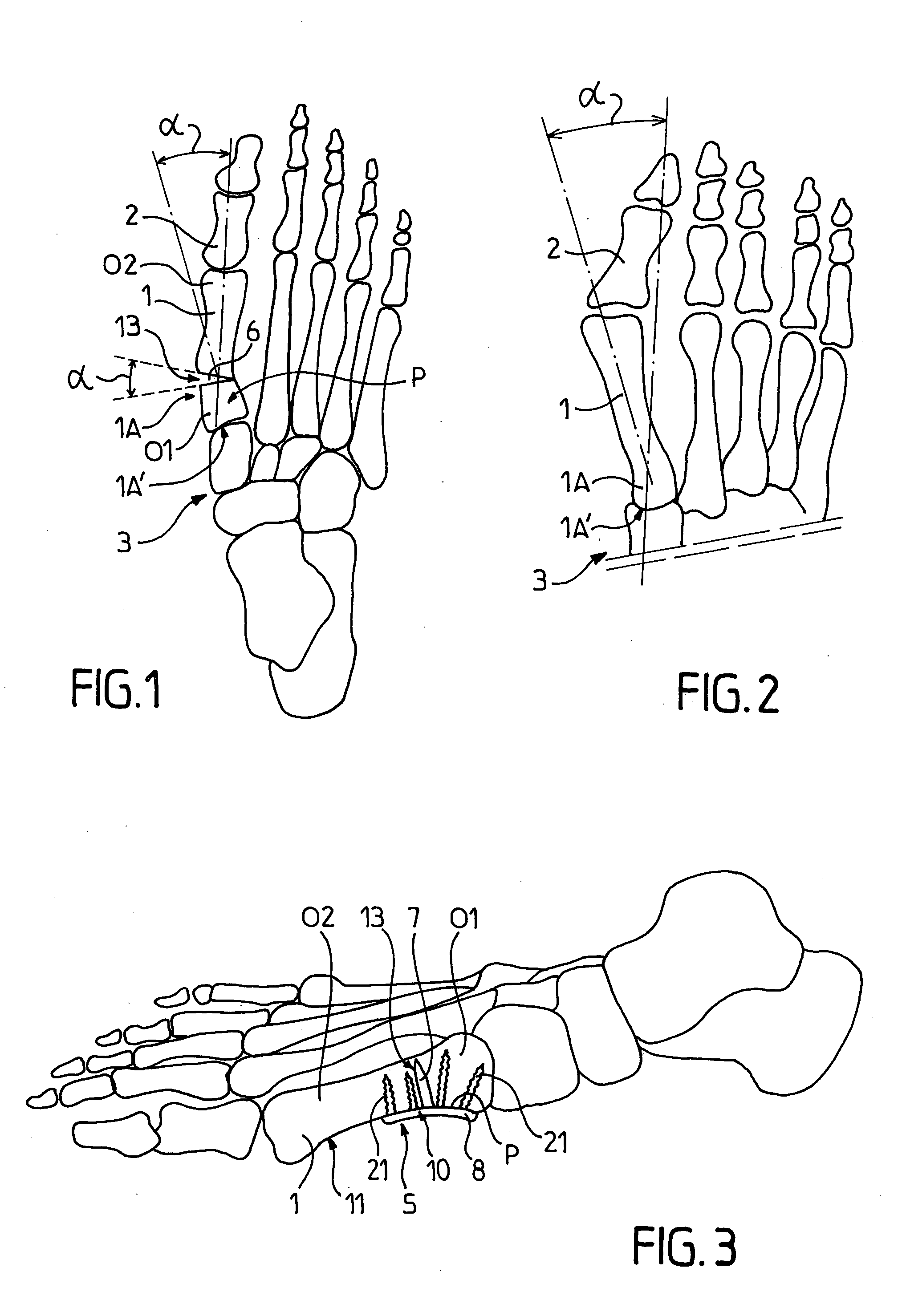Fastener implant for osteosynthesis of fragments of a first metatarsal bone that is broken or osteotomized in its proximal portion and a corresponding osteosynthesis method
a technology of fastener implants and metatarsals, applied in the field of fastener implants, can solve the problems of difficult placement, non-negligible drawbacks of known fastener systems, and less satisfactory intervention categories for large angles of deflection, and achieve the effect of easy placement and proper positioning
- Summary
- Abstract
- Description
- Claims
- Application Information
AI Technical Summary
Benefits of technology
Problems solved by technology
Method used
Image
Examples
Embodiment Construction
[0033]FIG. 1 shows the skeleton of a human foot, and in the figure there can be seen the first metatarsal bone 1 between the first phalanx 2 of the big toe and the tarsal bone 3. As shown in FIG. 1, the first metatarsal bone 1 has been sectioned by a lateral approach in its proximal portion 1A situated towards the tarsal bone 3, e.g. for the purpose of correcting deformation of the “hallux valgus” type, as shown in FIG. 2, which corresponds to an abnormal angle of deflection α of the first metatarsal bone.
[0034] In the description below, it is assumed that the first metatarsal bone has been subjected to osteotomy in its proximal portion 1A, e.g. subdividing it into two bone fragments O1 and O2. Under such circumstances, the fastener implant in accordance with the invention is intended to ensure osteosynthesis of the two bone fragments O1 and O2 after the osteotomy has been performed. Nevertheless, the fastener implant of the invention is not restricted to this type of application a...
PUM
 Login to View More
Login to View More Abstract
Description
Claims
Application Information
 Login to View More
Login to View More - R&D
- Intellectual Property
- Life Sciences
- Materials
- Tech Scout
- Unparalleled Data Quality
- Higher Quality Content
- 60% Fewer Hallucinations
Browse by: Latest US Patents, China's latest patents, Technical Efficacy Thesaurus, Application Domain, Technology Topic, Popular Technical Reports.
© 2025 PatSnap. All rights reserved.Legal|Privacy policy|Modern Slavery Act Transparency Statement|Sitemap|About US| Contact US: help@patsnap.com



